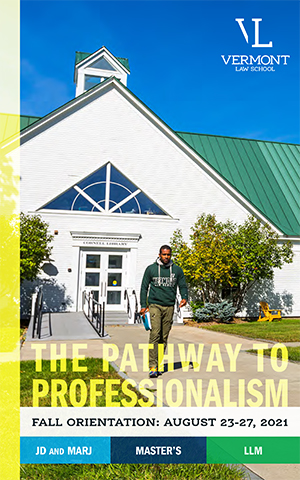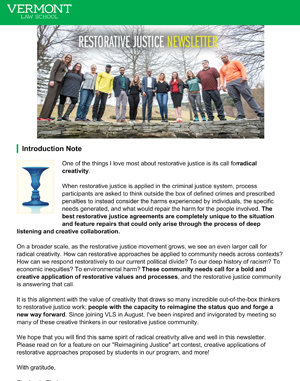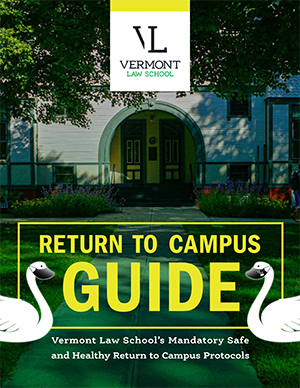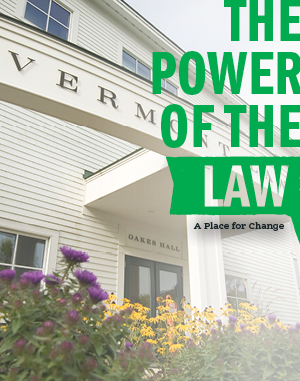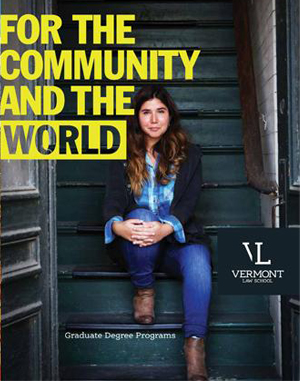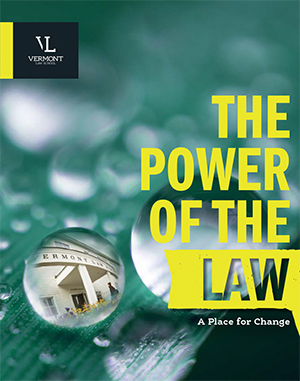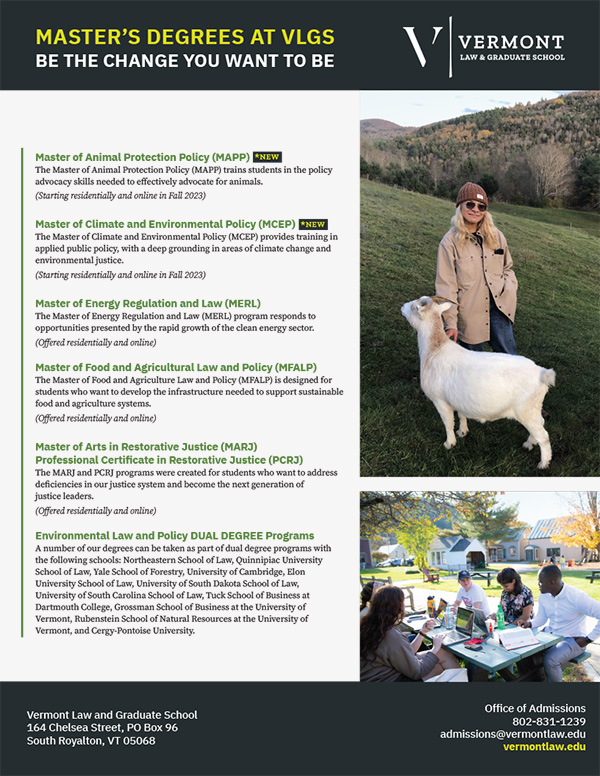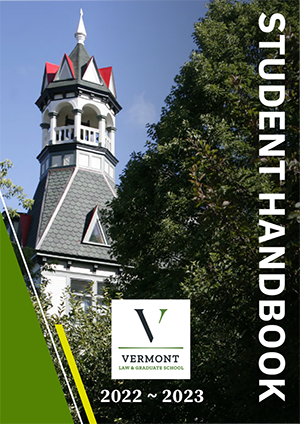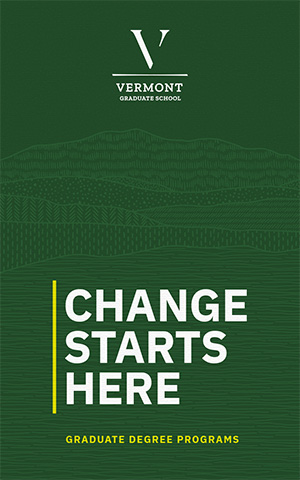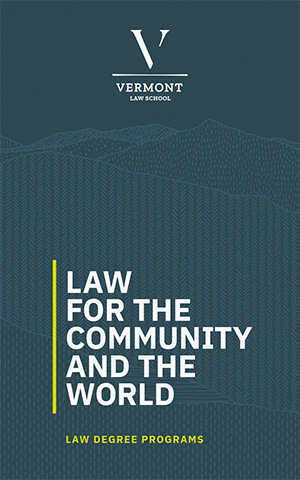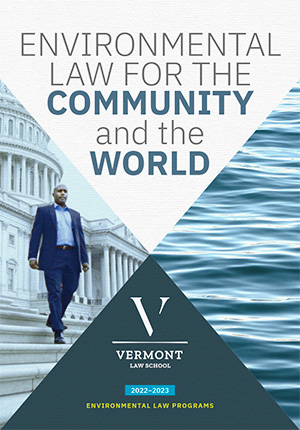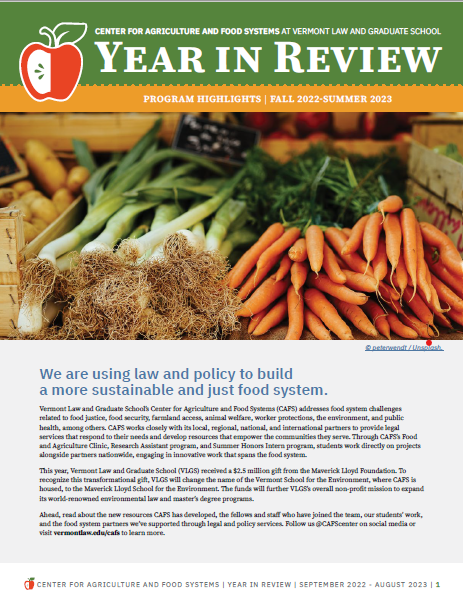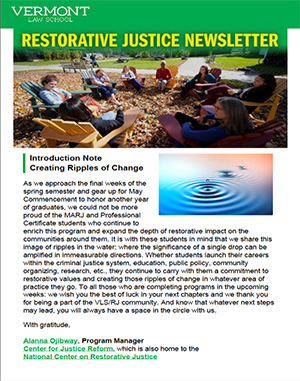The Vermont Journal of Environmental Law (VJEL) at Vermont Law School explores "Innovating the Environmental Law Classroom," the role of environmental law clinics in shaping law and policy, and other global models and issues in its most recent publication, Volume 18, Issue 1, released this week and available online.
"I am pleased to announce the publication of our first issue in Volume 18 of the Vermont Journal of Environmental Law," said VJEL Editor-in-Chief Rebecca Blackmon JD'17. "Among our seven articles and notes is the first part of our two-part series on 'Innovating the Environmental Law Classroom,' along with a student note, 'A Community Guide to Keeping Hydraulic Fracturing Off Local Property,' written by VJEL's very own note editor, Victoria Scozzaro JD/MELP'17. We are excited to share this scholarly leadership with the greater environmental law community—and with all who are concerned about the global environmental issues we face in the 21st century."
The book opens with the classroom series, which includes "A Changing Environment in China: The Ripe Opportunity for Environmental Law Clinics to Increase Public Participation and to Shape Law and Policy" by Nicholas Schroeck, director of the Transnational Environmental Law Clinic at Wayne State University Law School, and "Environmental and Biodiversity Law Clinic at Southwest Forestry University: A New Environmental Law Clinic Model in China" by Yanmei Lin of the U.S.-Asia Partnerships for Environmental Law at VLS.
A third article by Ana Cristina Carrera of OMG offers "A Comparative Analysis of the Evolution of Environmental Law in the Dominican Republic and the European Union."
VJEL Volume 18, Issue 1 also includes notes on "Endangered Species Act or Extradition? Protecting Foreign Species in the Aftermath of the Cecil the Lion Controversy"; "Rats and Trees Need Lawyers Too: Community Responsibility in Deodand Practice and Modern Environmentalism"; and, "Fragmentation of International Environmental Law and the Synergy: A Problem and a 21st Century Model Solution."
VJEL Volume 18, Issue 1 is available for download at vjel.vermontlaw.edu/current-volume.
The Vermont Journal of Environmental Law's mission is to provide an accessible forum to discuss contemporary environmental legal issues. VJEL publishes articles authored by academics, practitioners, and students alike. In selecting articles, VJEL editors recognize that environmental issues are inexorably linked with many other areas of law and seek to encompass a broad range of viewpoints and attitudes. In addition to publishing quarterly issues and hosting symposiums, VJEL reaches national audiences through its annual Top 10 Environmental Watch List. For more information about the Vermont Journal of Environmental Law, visit vjel.vermontlaw.edu.
###
Vermont Law School, a private, independent institution, is home to the nation's largest and deepest environmental law program. VLS offers a Juris Doctor curriculum that emphasizes public service; three Master's Degrees—Master of Environmental Law and Policy, Master of Energy Regulation and Law, and Master of Food and Agriculture Law and Policy; and four post-JD degrees —LLM in American Legal Studies (for foreign-trained lawyers), LLM in Energy Law, LLM in Environmental Law, and LLM in Food and Agriculture Law. The school features innovative experiential programs and is home to the Environmental Law Center, South Royalton Legal Clinic, Environmental and Natural Resources Law Clinic, Energy Clinic, Food and Agriculture Clinic, and Center for Applied Human Rights. For more information, visit vermontlaw.edu, find us on Facebook, and follow us on Twitter and Instagram.



